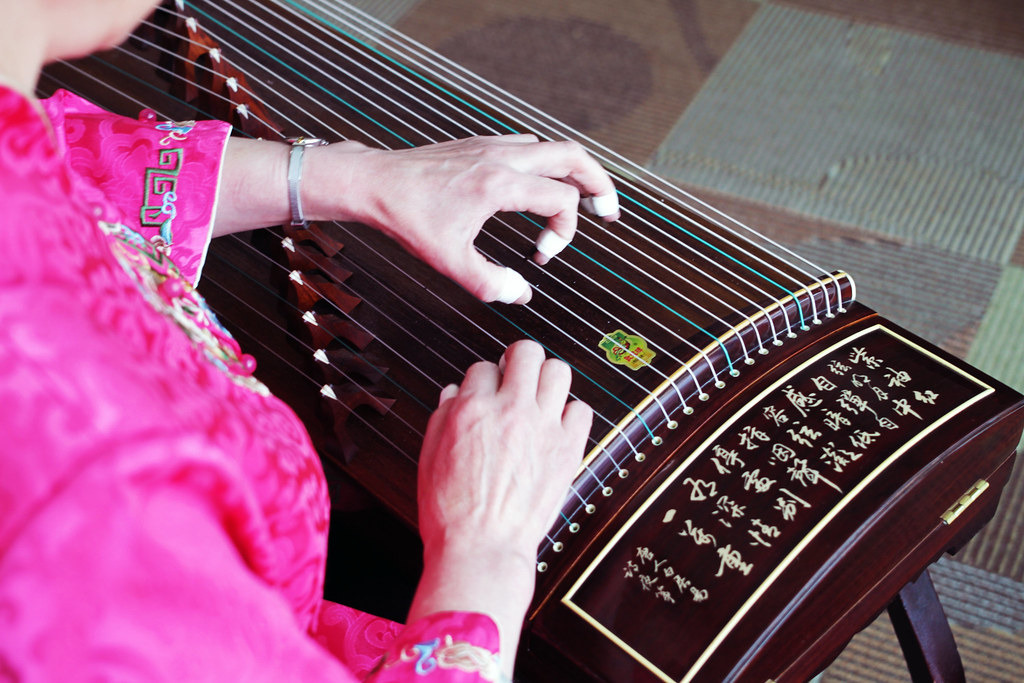Chinese culture has existed since the beginning. Since the 2070s BC, musical instruments have appeared, and countless unique ones have been born.
The Chinese boast hundreds of different traditional musical instruments.
And here is a list of this country’s 10 most popular musical instruments. In addition to these instruments, you can also find some sharing about their role in this populous country’s cultural and spiritual life.
1. Erhu
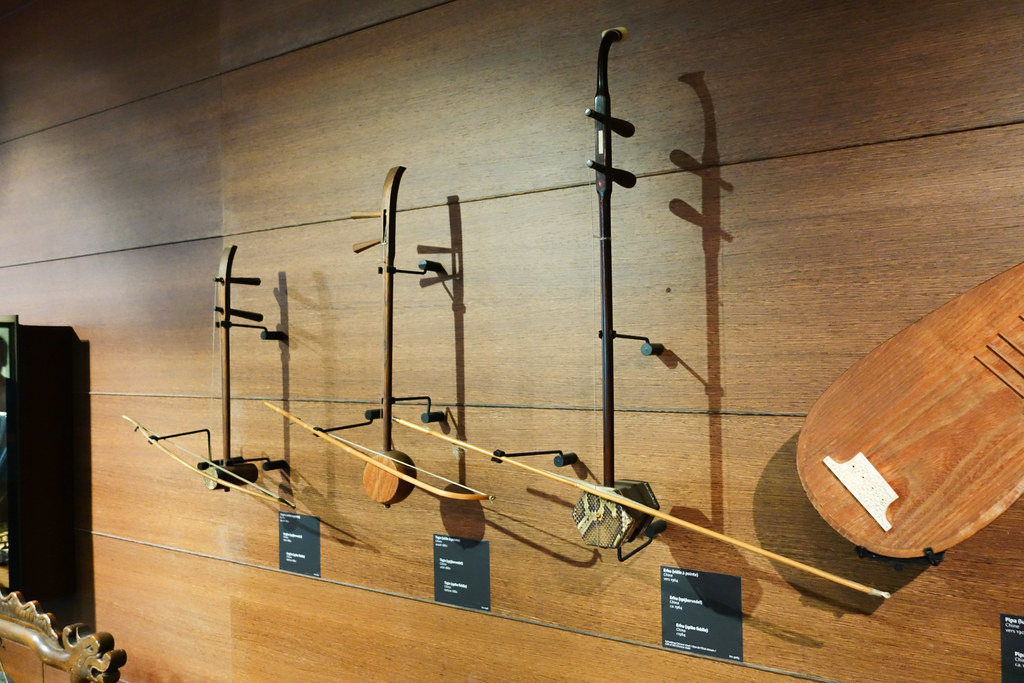
Erhu is a play similar to the cello. However, its structure consists of only two parts, the neck and the body, with two strings. In particular, the neck will be solid wood, and the body will be a resonance chamber.
With the above different design, the sound of the erhu can even imitate the sound of a bird or a horse, making a melancholy and melancholy sound.
This instrument often appears in opera performances in China. It is also an integral part of the traditional orchestra.
2. Big drums
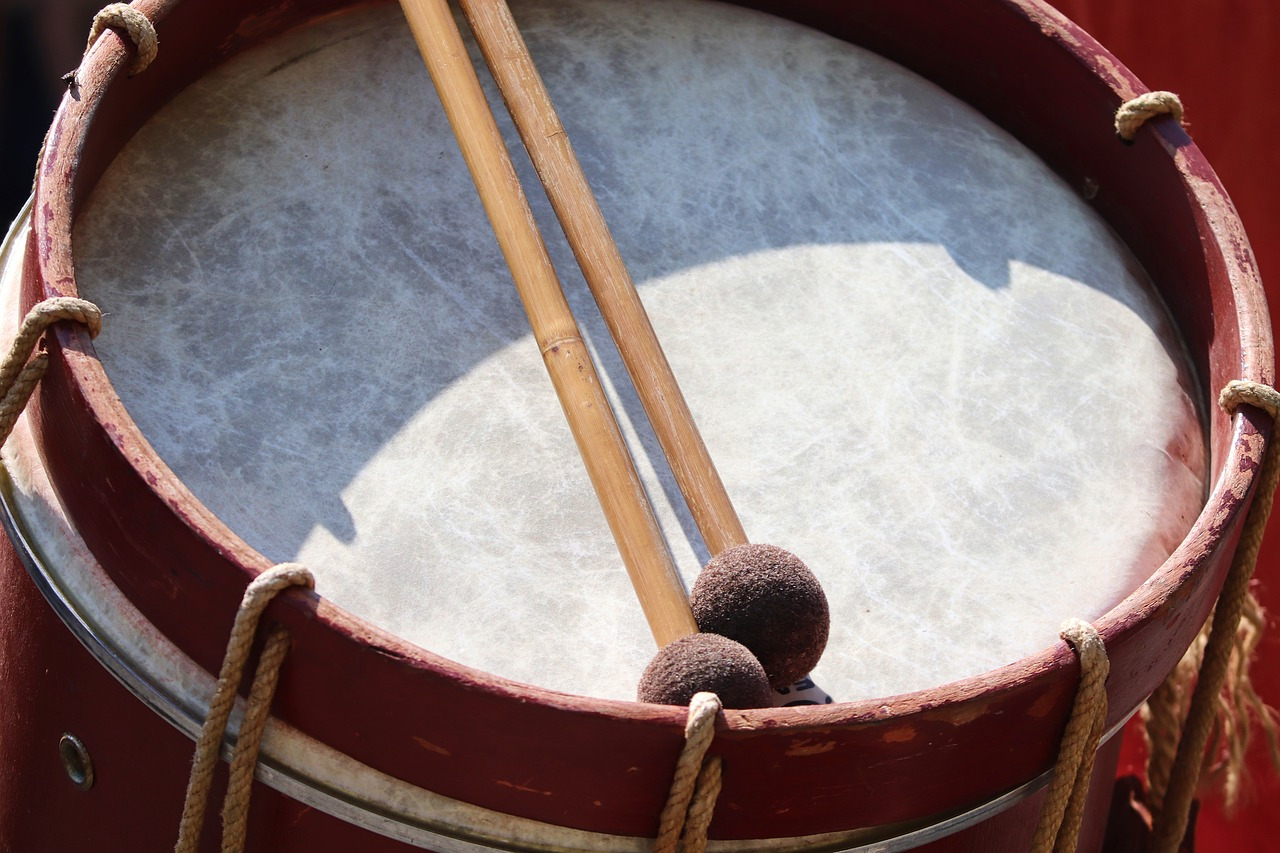
This drum is also known as Tanggu, a popular hall model. Its size is quite large, with two sides covered with animal skin, while the wooden drumstick is much larger and sturdier and is perfectly hand-molded.
This type has a rather low-pitched sound. Depending on how your stick is available, its timbre will change.
3. Guzheng
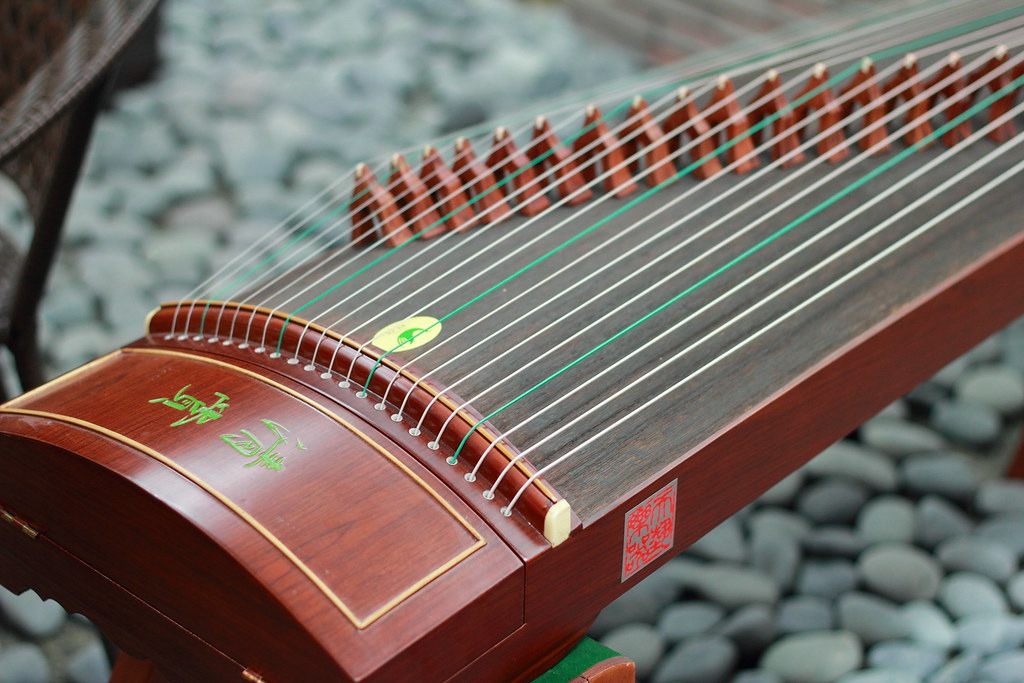
This type was quite common in ancient times. A traditional guzheng model will have a length of 5’4′. Yet, this model only has 21 – 26 strings with much shorter lengths in modern times.
Musicians must wear artificial nails and pinch the strings to play notes and heptatonic chords. The guzheng is suitable for solo performance rather than combined with other instruments.
4. Dizi
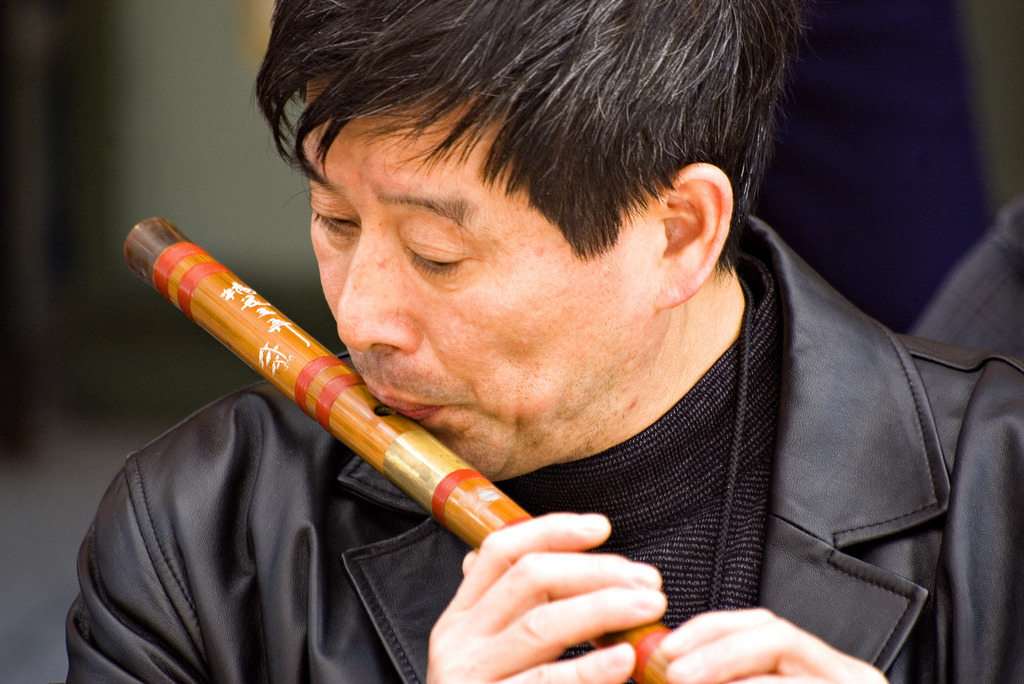
Dizi is a popular Chinese wind instrument. It usually has six eyelets and a paper clip to create a distinctive buzzing sound.
Dizi often appears in Chinese folk operas. It is also very familiar to students due to its ease of fabrication and portability.
5. Hulusi
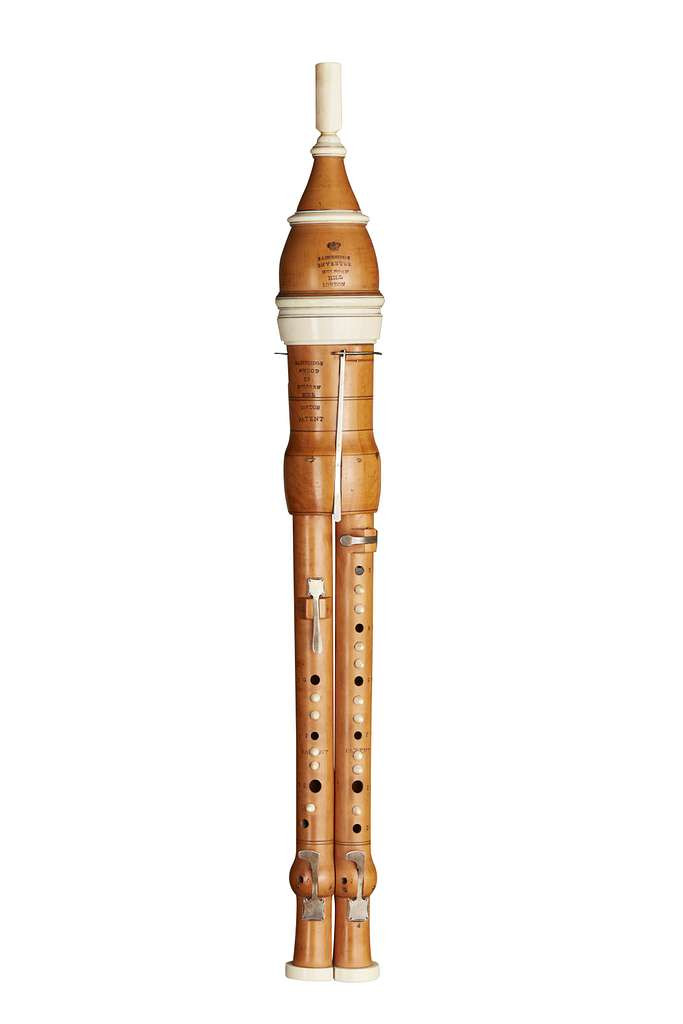
Hulusi is a typical musical instrument of ethnic minorities in South China. This musical instrument combines three bamboo tubes and a gourd box mouthpiece.
This instrument has an elegant appearance and a unique sound. Domestic and foreign tourists immensely love Hulusi. It is also in the subjects for elementary and middle school students because of its ease of use.
6. Suona
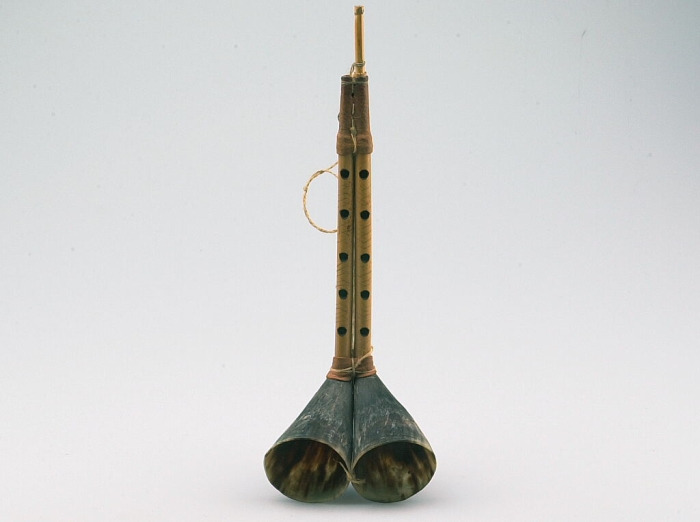
Suona is also known as laba. Its structure includes a wooden body, a tubular copper rod, and a bell-shaped metal mouth.
It is an essential musical instrument in Northern China. Previously, it was available in battles as a warning signal. Thanks to reverberation, it is widely used in weddings and funerals. It is also the signature product of the Yangko folk dances in North China.
7. Guqin
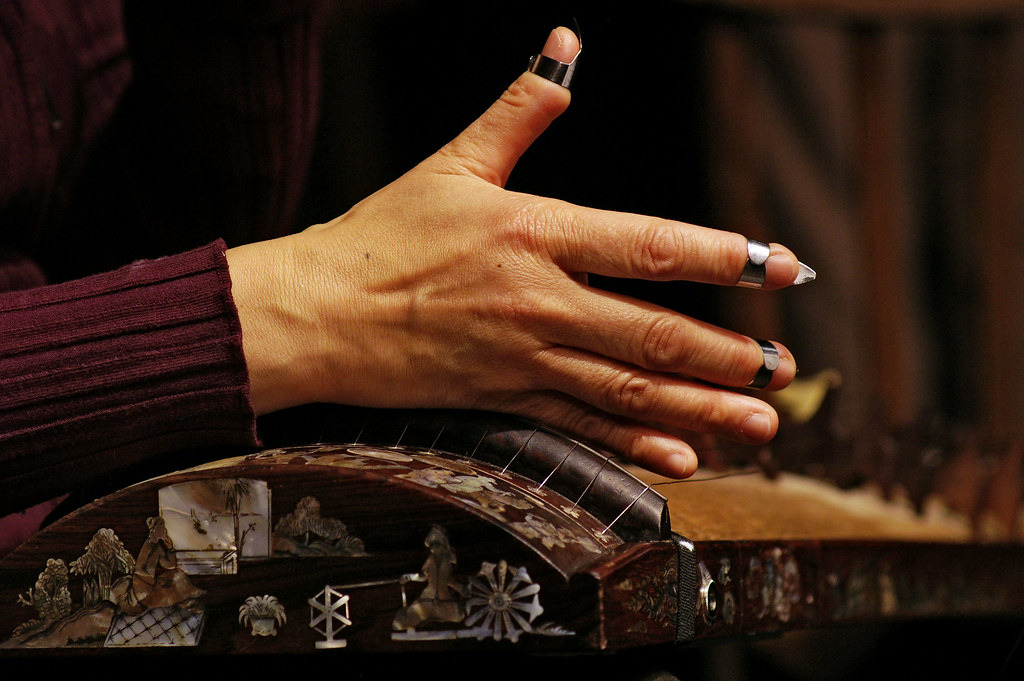
Guqin is quite a unique instrument. It is a wooden stringed instrument with a bottom resonator, and seven silk strings stretched across the body.
Every detail on Guqin is iconic. For example, its length of 3.65 Chinese feet represents the number of days in the year, and the 13 studs represent the number of lunar cycles in a year.
To play Guqin, you must use your little finger, ring finger, and right hand to pluck the strings. Meanwhile, the left thumb and index finger are available to press strings and adjust pitch and tone.
This instrument is often available to play solo. In Chinese culture, playing Guqin in religious ceremonies will bring wealth, abundance, and happiness.
8. Pengling
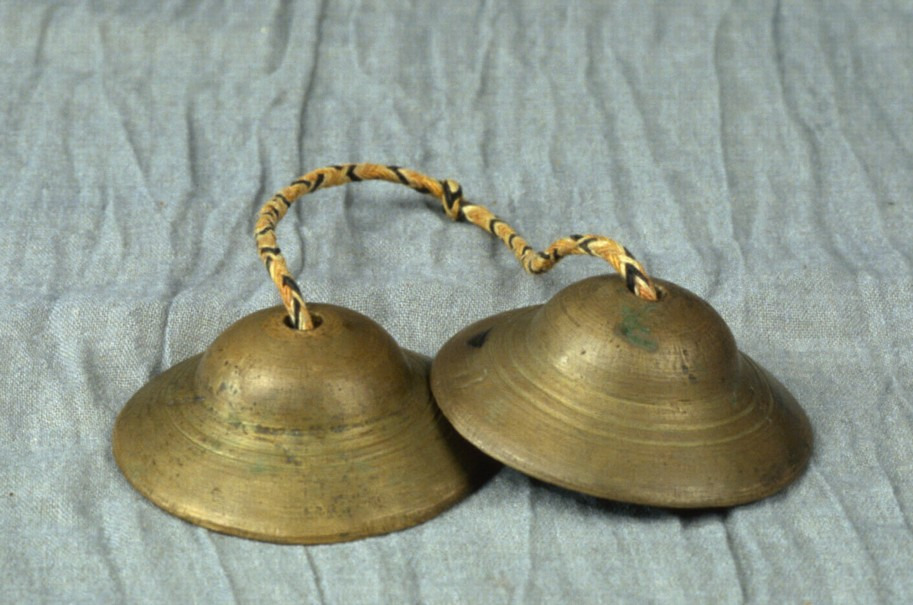
Pengling is a musical instrument from Tibet. It consists of two small bells attached to a string. The players will hold it with one hand, gently shaking it to make a sound.
This instrument has been widely popular since the Northern Wei period. It often appears with traditional dances or in conjunction with Buddhist rituals.
9. Liu Cam
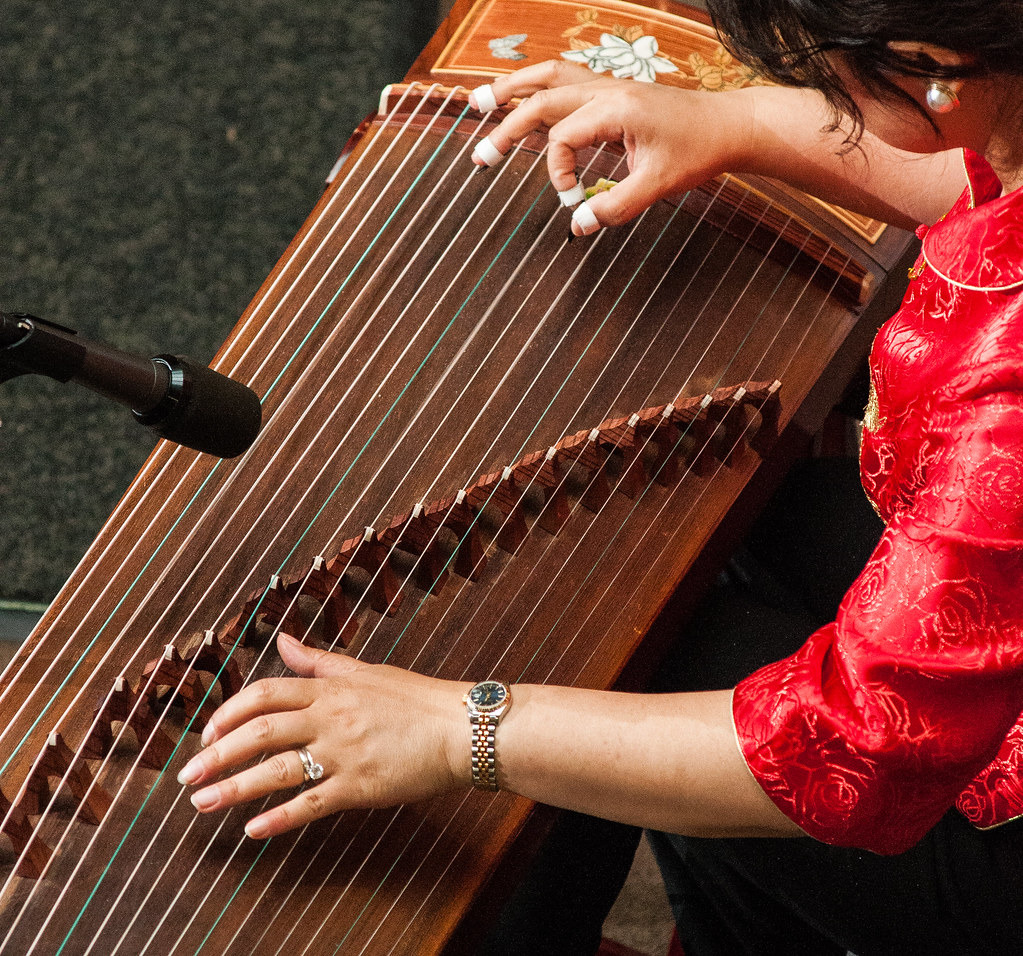
This type of instrument is also known as the Chinese mandolin. It has a pear-shaped body with 3-5 strings.
The range of this instrument is 6 octaves. Its tonal range is relatively high compared to similarly designed guitars.
Therefore, Liu Cam always keeps the main parts in traditional music ensembles or uses them for solos.
10. Pi Ba
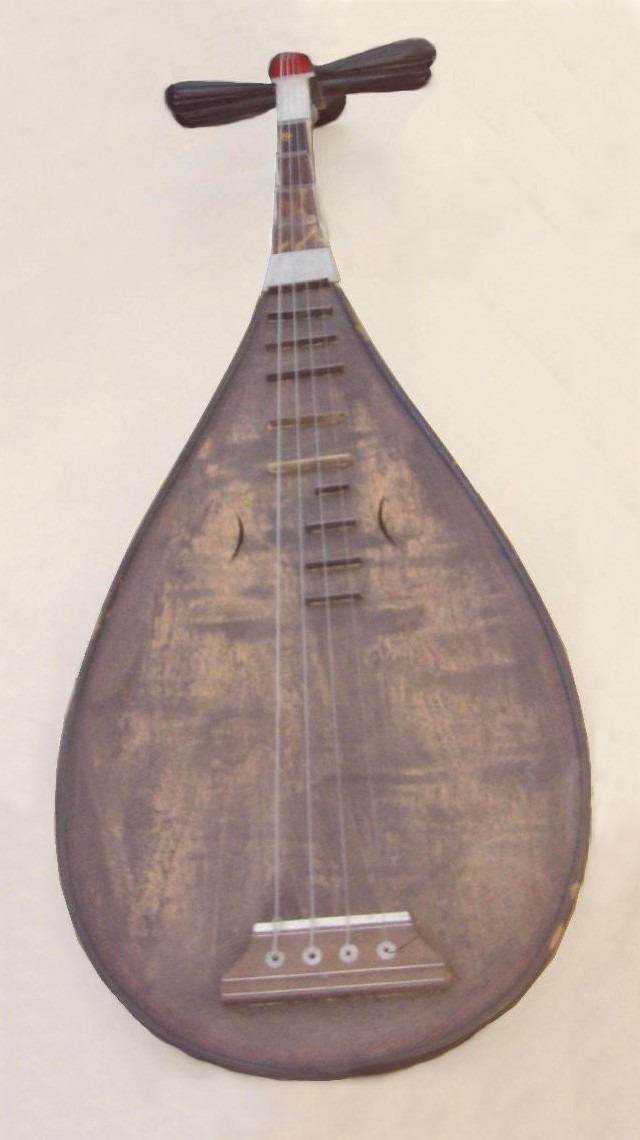
Pi Ba’s design is quite similar to Liu Cam, with a pear-shaped wooden body and four strings. However, the Pi Ba has about 12 – 26 frets, which is quite similar to a guitar, and doesn’t have the high tonal range like the Liu Cam.
Previously, Pipa only appeared at royal parties. Scholars also use this instrument as a way of spiritual training and self-improvement.
Piba has had quite a few changes to have a sound closer to Western music. The most significant change is probably the steel string part, which requires players to use a special plectrum.
FAQs
How were traditional Chinese instruments played?
Traditional Chinese instruments can be available for both solo and ensemble. Depending on the device, the player will have to perform different techniques.
For example, with different guitars, players must use the picks to tune, press, and pluck to get the desired sound. Meanwhile, the drums only require awl and percussion to create sound.
Some other unique instruments, such as bells, need to shake and vibrate.
Why are Chinese instruments necessary?
Chinese musical instruments have been a means of entertainment for thousands of years. These traditional models are also an integral part of traditional Chinese culture.
Which Chinese instrument is easiest to learn?
Bawu is an ideal instrument for those who are new to Chinese music. It is flexible and relatively easy to play. Or you can also look at Hulusi, which is quite popular with tourists inside and outside China.
Conclusion
The ten instruments listed above are among the most popular and well-liked in China. China’s rich cultural history also possesses many other interesting traditional musical instruments. Stay tuned for the following articles to learn more about these exciting instruments.

